
- Home
- Travel Packages
- Top Destination
-
Travel Attraction
By Category
Top Attraction

- Travel Agents
- Car Rentals
- Hotels
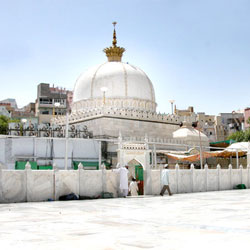
Khwaja Moinuddin Chistis Dargah
About The Khwaja Moinuddin Chistis Dargah The Khwaja Moinuddin Chishti Dargah is one of the most revered Sufi shrines in India, located in the city of Ajmer, Rajasthan. It is the final resting place of the Sufi saint Khwaja Moinuddin Chishti, who is also known as Gharib Nawaz, meaning "Benefactor of the Poor". The Dargah is visited by millions of pilgrims every year, regardless of their religion, to seek blessings and fulfill their wishes. Architecture of Khwaja Moinuddin Chistis Dargah The architecture of the Khwaja Moinuddin Chishti Dargah is a beautiful blend of Mughal and Rajput styles. The main entrance, known as the Nizam Gate, leads to a courtyard with the tomb of the saint in the center. The tomb is made of marble and is adorned with intricate carvings and precious stones. The Dargah also has a mosque, a large courtyard for prayers, and a separate section for women. History The Khwaja Moinuddin Chishti Dargah was built in the 13th century by Sultan Iltutmish of Delhi. Khwaja Moinuddin Chishti was a Sufi saint who traveled to India from Persia and settled in Ajmer. He was known for his teachings of peace, love, and unity among all religions. The Dargah has since become a symbol of harmony and spirituality for people of all faiths. Best Time To Visit The best time to visit the Khwaja Moinuddin Chishti Dargah is during the annual Urs festival, which commemorates the death anniversary of the saint. The Urs festival takes place in the Islamic month of Rajab and attracts pilgrims from across the country. The Dargah is also crowded during other Islamic festivals like Eid and Ramadan. How To Reach The Khwaja Moinuddin Chishti Dargah is located in the heart of Ajmer city, making it easily accessible by road, rail, and air. The nearest airport is in Jaipur, which is around 135 km away. Ajmer also has a well-connected railway station, with trains from major cities like Delhi, Mumbai, and Jaipur. Local buses and taxis are available for transportation within the city. Visitor Tips 1. Dress modestly and respectfully when visiting the Dargah, covering your head and removing your shoes before entering the shrine. 2. Photography is not allowed inside the Dargah premises, so be mindful of this restriction. 3. Make sure to respect the customs and traditions of the Dargah, such as offering prayers and tying threads on the marble screens. 4. Be cautious of touts and beggars outside the Dargah who may try to exploit your generosity. 5. Visit early in the morning or late in the evening to avoid the crowds and experience the peaceful atmosphere of the Dargah.
Explore More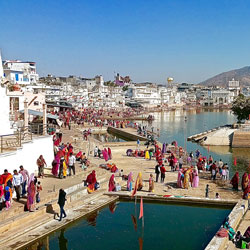
About The Pushkar (11 Kms from Ajmer): Temple The Pushkar Temple, located just 11 kilometers from Ajmer, is a significant Hindu pilgrimage site dedicated to Lord Brahma, the creator of the universe according to Hindu mythology. It is one of the very few temples in the world that is devoted to Lord Brahma, making it a unique and revered place of worship for Hindus. Architecture of Pushkar The Pushkar Temple is a beautiful piece of architecture with a distinct red-colored spire that can be seen from afar. The temple is built in the Nagara style of architecture with intricate carvings and sculptures adorning its walls. The sanctum sanctorum of the temple houses a mesmerizing idol of Lord Brahma along with other deities. The temple complex also has various smaller shrines dedicated to different gods and goddesses. History The history of the Pushkar Temple dates back to ancient times and is deeply rooted in Hindu mythology. According to legend, Lord Brahma performed a yajna (a fire ritual) at the site of the temple, which led to the creation of the Pushkar Lake. The temple was later built to commemorate this significant event. Over the centuries, the temple has been renovated and restored several times, but its spiritual essence and significance have remained unchanged. Best Time To Visit The best time to visit the Pushkar Temple is during the months of October to March when the weather is pleasant and conducive for exploring the temple complex and taking part in various religious activities. The annual Pushkar Camel Fair, held in November, is also a great time to visit the temple as it attracts a large number of pilgrims and tourists from all over the world. How To Reach The Pushkar Temple is located just 11 kilometers from Ajmer, which is well-connected by road and rail to major cities in India. The nearest airport is in Jaipur, which is around 146 kilometers away from Pushkar. From Ajmer, visitors can hire a taxi or take a local bus to reach the temple. The temple is located close to the famous Pushkar Lake, making it a convenient and easily accessible pilgrimage site. Significance Of The Pushkar The Pushkar Temple holds great religious and cultural significance for Hindus. It is believed that taking a dip in the holy waters of the Pushkar Lake near the temple can cleanse one's sins and lead to spiritual purification. The temple is also a popular destination for performing various rituals and ceremonies. Lord Brahma is worshipped here with great reverence, and devotees visit the temple to seek his blessings for happiness, prosperity, and well-being.
Explore More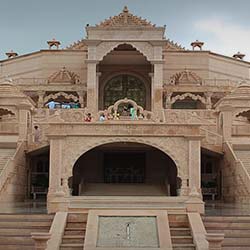
About Nareli Jain Temple, Ajmer The Nareli Jain Temple in Ajmer, Rajasthan is a magnificent architectural marvel that attracts numerous visitors and pilgrims from all over the country. This temple is dedicated to the Jain community and is known for its stunning design and religious significance. Let's delve into the history, architecture, and cultural practices associated with this iconic temple. History The construction of the Nareli Jain Temple began in the year 1997 under the guidance of the Anand Rishiji Maharaj. It took nearly 10 years to complete the temple complex, which is spread over 24 acres of land. The temple was built to provide a spiritual retreat for the Jain community and to showcase the rich cultural heritage of the religion. Architecture and Design The Nareli Jain Temple features a unique blend of modern and traditional architectural styles. The temple complex consists of 24 miniature temples, each dedicated to a different Jain Tirthankara. The central temple is adorned with intricate carvings, golden spires, and ornate domes, creating a mesmerizing sight for visitors. Best Time to Visit Visiting the Nareli Jain Temple in Ajmer is best during the winter months (October to March) when the weather is pleasant and ideal for sightseeing. Avoid visiting during the summer months (April to June) as the scorching heat can make it uncomfortable for outdoor activities. Cultural Significance The Nareli Jain Temple holds immense cultural significance for the Jain community as it serves as a place of worship, spiritual reflection, and community gatherings. Visitors can witness traditional Jain rituals, prayers, and ceremonies that are performed at the temple, offering a glimpse into the rich cultural heritage of the religion. Pilgrimage Practices Devotees visiting the Nareli Jain Temple often engage in various religious practices such as meditation, chanting of prayers, and offering of prayers to the deities. Pilgrims also participate in temple rituals, seek blessings from the priests, and make offerings to the Tirthankaras as a form of devotion and gratitude. Dress Code and Etiquette When visiting the Nareli Jain Temple, it is important to dress modestly and respectfully. Both men and women are expected to wear conservative clothing that covers their shoulders and knees. Remove footwear before entering the temple premises and maintain silence and decorum during prayer sessions. Activities and Experiences Visitors to the Nareli Jain Temple can participate in a range of activities and experiences that enrich their spiritual journey. Attend religious discourses, explore the temple complex, partake in religious ceremonies, and seek blessings from the deities. The serene surroundings and tranquil ambiance make it an ideal place for meditation and introspection. Art and Religious Symbols The Nareli Jain Temple is adorned with intricate sculptures, paintings, and carvings that depict scenes from Jain mythology and history. Religious symbols such as the Jain wheel, Swastika, and Om are prominently featured in the temple architecture, reflecting the spiritual beliefs and values of the Jain community. Local Insights Local residents of Ajmer can provide valuable insights into the history, cultural practices, and significance of the Nareli Jain Temple. Engage with local guides, priests, and artisans to gain a deeper understanding of the temple's architecture, religious rituals, and the influence of Jainism in the region.
Explore More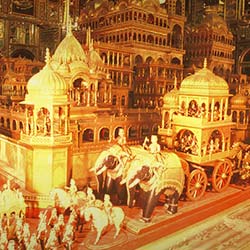
About Ajmer Jain Temple History, Architecture and Design The Ajmer Jain Temple, also known as Soniji Ki Nasiyan, is a stunning piece of architecture located in the city of Ajmer, Rajasthan. This temple was built in the late 19th century by the Jain merchant Seth Moolchand Soni. It is dedicated to Lord Rishabhanatha, who is considered to be the first Tirthankara of Jainism. The temple is known for its intricate designs and breathtaking architecture. The two-story structure is made entirely of red sandstone and features intricate carvings, sculptures, and paintings that depict various Jain philosophies and teachings. Best Time to Visit - The best time to visit the Ajmer Jain Temple is during the winter months, from October to March, when the weather is pleasant and perfect for exploring the temple and its surroundings. - The temple is also open throughout the year, so you can visit anytime you wish. Cultural Significance The Ajmer Jain Temple holds immense cultural significance for the Jain community. It is considered a sacred place of worship and pilgrimage for followers of Jainism. The temple is not only a religious site but also a cultural and historical landmark that showcases the rich heritage of Rajasthan. Pilgrimage Practices Visitors to the Ajmer Jain Temple can participate in various pilgrimage practices such as offering prayers, meditating, and performing rituals. Many devotees also bring offerings such as fruits, flowers, and sweets as a symbol of their devotion to Lord Rishabhanatha. Dress Code and Etiquette While visiting the Ajmer Jain Temple, it is important to dress modestly and respectfully. Visitors are required to cover their heads and remove their shoes before entering the temple premises. It is also considered polite to maintain silence and refrain from speaking loudly or engaging in disruptive behavior. Activities and Experiences Visitors to the Ajmer Jain Temple can engage in a variety of activities and experiences such as exploring the temple complex, admiring the intricate architecture, attending religious ceremonies, and learning about Jainism and its teachings. The temple also hosts various cultural events and festivals throughout the year that offer a glimpse into Jain traditions and practices. Art and Religious Symbols The Ajmer Jain Temple is adorned with beautiful artworks and religious symbols that hold deep spiritual significance for followers of Jainism. The temple's walls, ceilings, and pillars are adorned with intricate carvings, sculptures, and paintings that depict various Jain deities, symbols, and teachings. These artworks serve as a visual representation of Jain philosophy and spirituality. Local Insights Visiting the Ajmer Jain Temple offers visitors a unique opportunity to immerse themselves in the rich culture and heritage of Rajasthan. The temple is not only a place of worship but also a symbol of Jain traditions and values that have been passed down through generations. By exploring the temple and interacting with locals, visitors can gain valuable insights into the history, art, and spirituality of Jainism in the region.
Explore More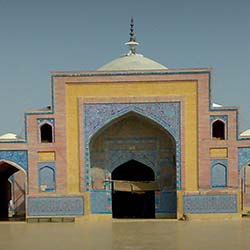
About The Shah Jahan's Mosque The Shah Jahan's Mosque, located in Ajmer, Rajasthan, is a beautiful architectural marvel built by Mughal emperor Shah Jahan in the 17th century. This mosque holds significant historical and cultural importance in India and is a popular tourist attraction for visitors from all over the world. Architecture of Shah Jahan's Mosque The Shah Jahan's Mosque boasts stunning Mughal architecture with intricate carvings and delicate designs. The mosque features white marble domes, finely crafted minarets, and elegant archways that showcase the grandeur of Mughal craftsmanship. The main prayer hall is adorned with exquisite floral patterns and calligraphy, creating a serene and spiritual atmosphere for worshippers. History The Shah Jahan's Mosque was commissioned by Emperor Shah Jahan in 1638 during his visit to Ajmer. It was constructed in honor of his beloved wife, Mumtaz Mahal, who is buried nearby in the famous Ajmer Sharif Dargah. The mosque stands as a symbol of the Mughal Empire's architectural legacy and their influence on Indian culture and society. Best Time To Visit The best time to visit the Shah Jahan's Mosque is during the cooler months of October to March when the weather is pleasant and ideal for exploring the historical sites in Ajmer. Avoid visiting during the summer months as the temperature can soar, making it uncomfortable for sightseeing. How To Reach The Shah Jahan's Mosque is easily accessible by road, rail, and air. The nearest railway station is Ajmer Junction, which is well-connected to major cities in India. The mosque is also conveniently located near the Ajmer Bus Stand, making it accessible by public transportation. If traveling by air, the nearest airport is Jaipur International Airport, which is approximately 135 kilometers away from Ajmer. Visitor Tips 1. Respect the religious significance of the mosque and dress modestly when visiting. 2. Remove your shoes before entering the mosque to show respect for the sacred space. 3. Take time to admire the intricate details of the architecture and immerse yourself in the historical ambiance of the mosque. 4. Visit during prayer times to experience the spiritual atmosphere and witness the local community in worship. 5. Hire a guide to learn more about the history and significance of the Shah Jahan's Mosque for a more enriching experience.
Explore More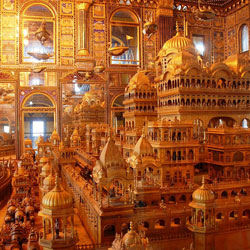
About Soniji Ki Nasiyan Soniji Ki Nasiyan, also known as the Ajmer Jain Temple, is a prominent religious site in Ajmer, Rajasthan, India. It is dedicated to Lord Rishabhanatha, who is the first Tirthankara of Jainism. The temple is renowned for its stunning architecture and intricate design, making it a must-visit attraction for tourists and pilgrims alike. History, Architecture, and Design The construction of Soniji Ki Nasiyan began in the late 19th century and was completed in 1865. The temple is adorned with intricate carvings, sculptures, and paintings that depict various Jain legends and teachings. The main prayer hall, known as the Swarna Nagari (City of Gold), is a marvel of architecture with its ornate gold-plated wooden structures and beautiful glasswork. Best Time to Visit - The best time to visit Soniji Ki Nasiyan is during the winter months from October to March when the weather is pleasant. - It is recommended to avoid visiting during the monsoon season from July to September due to heavy rainfall. Cultural Significance Soniji Ki Nasiyan holds great cultural significance for the Jain community as it is a place of worship and spiritual enlightenment. The temple is a symbol of Jain values such as non-violence, truthfulness, and compassion. Pilgrimage Practices Pilgrims visiting Soniji Ki Nasiyan usually participate in prayer ceremonies, offer donations, and seek blessings from the deities. It is a common practice to perform rituals such as lighting incense sticks, offering flowers, and chanting prayers. Dress Code and Etiquette Visitors are required to dress modestly and cover their shoulders and knees when entering Soniji Ki Nasiyan. It is also important to maintain silence and show respect for the religious customs and traditions observed at the temple. Activities and Experiences Visitors to Soniji Ki Nasiyan can explore the various prayer halls, admire the intricate artwork, and learn about Jain teachings and philosophy. The temple also has a museum that displays artifacts and relics related to Jain history and culture. Art and Religious Symbols The architecture of Soniji Ki Nasiyan is adorned with intricate carvings and sculptures that depict various Jain deities, symbols, and teachings. The temple's design is a reflection of Jain beliefs in non-violence, karma, and spiritual enlightenment. Local Insights Local guides at Soniji Ki Nasiyan can provide insights into the history, architecture, and significance of the temple. They can offer valuable information about Jainism, its rituals, and traditions, making the visit a truly enriching experience.
Explore More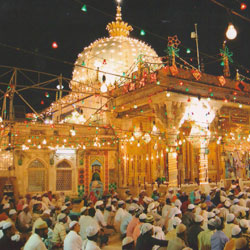
About The Khwaja Garib Nawaz Dargah The Khwaja Garib Nawaz Dargah, located in Ajmer, Rajasthan, is one of the most important Sufi shrines in India. It is dedicated to Khwaja Moinuddin Chishti, a 13th-century Sufi saint who is also known as Garib Nawaz, which means "benefactor of the poor." The Dargah is a place of pilgrimage for Muslims from all over the world, as well as people of other faiths who come to seek blessings and offer prayers. Architecture of Khwaja Garib Nawaz Dargah The Dargah complex is built in a traditional Mughal architectural style, with white marble buildings adorned with intricate carvings and beautiful domes. The centerpiece of the complex is the tomb of Khwaja Moinuddin Chishti, which is surrounded by a large courtyard where devotees gather to offer prayers and seek blessings. The Dargah also houses several other tombs, mosques, and other structures that date back to different periods in history. History The Khwaja Garib Nawaz Dargah was built in the 13th century after the death of Khwaja Moinuddin Chishti. He was a revered Sufi saint who dedicated his life to helping the poor and promoting peace and harmony among people of different faiths. His teachings and spiritual presence attracted a large following, and after his death, the Dargah was established as a place of pilgrimage for his devotees. Over the centuries, the Dargah has become a symbol of unity and brotherhood, attracting people from all walks of life. Best Time To Visit The best time to visit the Khwaja Garib Nawaz Dargah is during the annual Urs festival, which commemorates the death anniversary of Khwaja Moinuddin Chishti. The festival is held in the seventh month of the Islamic lunar calendar and lasts for six days, attracting millions of pilgrims from around the world. The Dargah is beautifully decorated with lights and flowers during this time, and the atmosphere is filled with devotion and spiritual fervor. How To Reach The Khwaja Garib Nawaz Dargah is located in the heart of Ajmer city, making it easily accessible by road, rail, and air. The nearest airport is in Jaipur, which is about 130 kilometers away from Ajmer. The Ajmer Junction railway station is well-connected to major cities in India, making it convenient for visitors to reach the Dargah by train. Additionally, there are regular bus services from nearby cities to Ajmer, making it easy for pilgrims to travel to the Dargah. Visitor Tips When visiting the Khwaja Garib Nawaz Dargah, it is important to dress modestly and show respect for the religious customs and traditions of the place. Visitors are required to remove their shoes before entering the Dargah complex and maintain a peaceful and reverent demeanor. It is also customary to offer prayers and make a donation at the shrine as a sign of reverence and gratitude. Additionally, travelers should be prepared for large crowds, especially during the Urs festival, and plan their visit accordingly to make the most of their spiritual experience at the Dargah. Overall, the Khwaja Garib Nawaz Dargah is not just a religious site but also a symbol of peace, unity, and brotherhood that welcomes people of all faiths with open arms. Whether you are a devout Muslim seeking blessings or a curious traveler interested in exploring the rich spiritual heritage of India, a visit to this sacred shrine is sure to leave a lasting impression on your heart and soul.
Explore More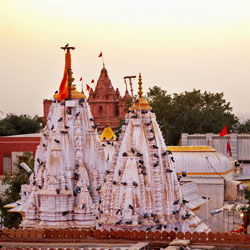
About Bhandeshwar Jain Temples, Bikaner History The Bhandeshwar Jain Temples in Bikaner are a group of beautifully crafted temples that date back to the 15th century. These temples were built during the rule of Maharaja Rai Singh, the sixth ruler of Bikaner. The intricate carvings and stunning architecture of the temples speak to the rich cultural and religious history of the region. Architecture and Design The Bhandeshwar Jain Temples are known for their exquisite architecture and design. The temples are made of red sandstone and feature intricate carvings, delicate sculptures, and elaborate lattice work. The interiors of the temples are adorned with beautiful paintings and frescoes that depict Jain teachings and mythology. Best Time to Visit While the Bhandeshwar Jain Temples can be visited throughout the year, the best time to visit is during the winter months from October to March when the weather is pleasant and cool. Cultural Significance The Bhandeshwar Jain Temples hold immense cultural significance for the Jain community as they are considered sacred places of worship. The temples are also significant for their historical importance and architectural beauty, attracting visitors from all over the world. Pilgrimage Practices Visitors to the Bhandeshwar Jain Temples can participate in various pilgrimage practices such as offering prayers, meditating, and performing rituals. Pilgrims often undertake a journey to the temples to seek spiritual enlightenment and blessings. Dress Code and Etiquette While visiting the Bhandeshwar Jain Temples, it is important to dress modestly and respectfully. Visitors should cover their shoulders and knees and remove their shoes before entering the temple premises. Silence and reverence should be maintained inside the temples to show respect for the religious practices. Activities and Experiences Visitors to the Bhandeshwar Jain Temples can engage in various activities and experiences such as attending religious ceremonies, exploring the intricate architecture, and learning about Jain teachings. The serene atmosphere of the temples provides a peaceful and reflective space for visitors. Art and Religious Symbols The Bhandeshwar Jain Temples are adorned with exquisite art and religious symbols that hold deep significance for the Jain community. The intricate carvings, paintings, and sculptures depict scenes from Jain mythology and teachings, creating a spiritual and aesthetic experience for visitors. Local Insights Local residents and guides at the Bhandeshwar Jain Temples can provide valuable insights into the history, architecture, and cultural significance of the temples. Visitors can learn about the traditions and practices of the Jain community and gain a deeper understanding of the spiritual heritage of the region.
Explore More
About The Karni Mata Temple (Deshnok) in Bikaner The Karni Mata Temple, located in the small town of Deshnok in Bikaner district of Rajasthan, is a famous Hindu temple dedicated to Karni Mata, a revered female Hindu sage. The temple is also known as the "Rat Temple" due to the presence of thousands of rats that are worshipped as sacred beings. Devotees from all over the country come to seek blessings at this unique temple. Architecture of Karni Mata Temple (Deshnok) The Karni Mata Temple is a stunning example of Rajput architecture with intricate marble carvings, beautiful frescoes, and ornate designs. The temple has a huge silver gate, which leads to the inner sanctum where the idol of Karni Mata is worshipped. The inner sanctum is adorned with silver and gold decorations, adding to the grandeur of the temple. History The Karni Mata Temple was built in the 15th century by Maharaja Ganga Singh of Bikaner. The legend has it that Karni Mata, a mystic who was believed to be an incarnation of Goddess Durga, had miraculous powers and could bring the dead back to life. When her youngest son Laxman drowned, she appealed to Yama, the God of death, to revive him. When Yama refused, Karni Mata transformed Laxman and all of her male descendants into rats so they could remain in her service forever. Best Time To Visit The best time to visit the Karni Mata Temple is during the festival of Navratri, which is celebrated with great fervor in the months of September-October. Thousands of devotees throng to the temple during this time to seek blessings of Karni Mata. Another good time to visit is during the winter months from October to March when the weather is pleasant and ideal for sightseeing. How To Reach The Karni Mata Temple is located in Deshnok, which is around 30 kilometers from Bikaner city. The nearest airport is in Jodhpur, which is around 250 kilometers away. The temple can be easily reached by road from Bikaner as there are regular bus services and taxis available. The nearest railway station is in Bikaner, which is well-connected to major cities like Jaipur, Delhi, and Jodhpur. Significance Of The Karni Mata Temple (Deshnok) The Karni Mata Temple holds great significance for the people of Rajasthan as Karni Mata is believed to be the presiding deity of the state. The temple is a symbol of faith and devotion for the devotees who come here seeking blessings for their well-being and prosperity. The presence of rats in the temple is considered auspicious and it is believed that seeing a white rat is a sign of good luck.
Explore More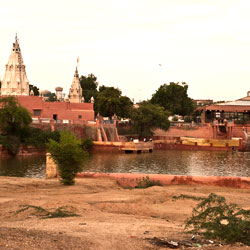
About The Kolayatji (50 Kms) Temple The Kolayatji Temple, located 50 kilometers from Bikaner in the Indian state of Rajasthan, is a significant Hindu pilgrimage site dedicated to Lord Vishnu. The temple complex is situated near the Kolayat Lake, which adds to the serene and spiritual atmosphere of the place. It is believed that taking a dip in the sacred waters of the lake can cleanse one's sins and bring blessings. Architecture Of Kolayatji (50 Kms) Temple The architecture of the Kolayatji Temple is a fine example of traditional Rajasthani craftsmanship. The temple complex is built in a typical Rajasthani style with intricate carvings, beautiful frescoes, and stunning architectural details. The main temple is adorned with colorful paintings and sculptures of Hindu deities, creating a visually stunning setting for devotees and visitors. History The history of the Kolayatji Temple dates back centuries, with mentions of the temple in ancient scriptures and texts. It is believed that the temple was built by King Vikramaditya in honor of Lord Vishnu and has since been an important pilgrimage site for devotees from all over the country. The temple has stood the test of time and continues to draw pilgrims seeking blessings and spiritual solace. Best Time To Visit The best time to visit the Kolayatji Temple is during the winter months from October to March when the weather in Rajasthan is pleasant and conducive for sightseeing and temple visits. The annual Kolayat Fair, held during the months of October and November, is a great time to visit the temple as it is bustling with activity and festivities. However, the temple is open to visitors throughout the year, so one can plan a visit according to their convenience. How To Reach The Kolayatji Temple is located around 50 kilometers from Bikaner in Rajasthan and is easily accessible by road. Visitors can hire a taxi or take a bus from Bikaner to reach the temple. The nearest railway station is in Bikaner, which is well-connected to major cities in Rajasthan and other parts of the country. If arriving by air, the nearest airport is in Jodhpur, around 250 kilometers away, from where one can take a taxi or bus to reach the temple. Significance Of The Kolayatji (50 Kms) Temple The Kolayatji Temple holds immense significance for devotees of Lord Vishnu and is believed to be a place where one can seek blessings, fulfill wishes, and find inner peace. The temple complex is not only a religious site but also a cultural and historical landmark in Rajasthan. Pilgrims visit the temple to offer prayers, perform rituals, and participate in festivals to seek the blessings of the deity. The serene surroundings of the temple and the holy Kolayat Lake make it a tranquil and spiritual destination for those seeking a divine experience.
Explore More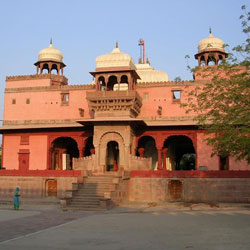
About The Shiv Bari Temple in Bikaner The Shiv Bari Temple, located in the city of Bikaner in the Indian state of Rajasthan, is a popular Hindu temple dedicated to Lord Shiva. It is one of the most revered temples in the region and attracts devotees and tourists from far and wide. The temple is known for its architectural beauty, historical significance, and religious importance. Architecture Of Shiv Bari Temple The Shiv Bari Temple is a fine example of Rajputana architecture, with intricate carvings, beautiful sculptures, and delicate designs adorning its walls and ceilings. The temple complex is built in a traditional Rajasthani style, with a grand entrance gate leading to a central courtyard where the main shrine of Lord Shiva is located. The temple's spire, or shikara, is a prominent feature of its architecture and is adorned with colorful frescoes and ornate carvings. History The Shiv Bari Temple was built by Maharaja Doongar Singh of Bikaner in the late 19th century. The temple is believed to have been constructed to honor the memory of the king's father, Maharaja Lal Singh, who was a staunch devotee of Lord Shiva. The temple has since been a place of worship and pilgrimage for the people of Bikaner and has played a significant role in the religious and cultural life of the city. Best Time To Visit The best time to visit the Shiv Bari Temple is during the winter months, from October to March, when the weather is pleasant and conducive for sightseeing and exploring the temple complex. The temple is also illuminated during the evening hours, creating a magical and serene atmosphere for visitors to experience. It is advisable to avoid visiting the temple during the summer months, as the scorching heat can make it uncomfortable for sightseeing. How To Reach The Shiv Bari Temple is located in the heart of Bikaner city and is easily accessible by road. Bikaner is well-connected to major cities in Rajasthan and other parts of India by a network of roads, railways, and airways. The nearest railway station to the temple is Bikaner Junction, which is just a short drive away. The nearest airport is Jodhpur Airport, which is located approximately 250 kilometers from Bikaner. Significance Of The Shiv Bari Temple The Shiv Bari Temple holds great religious significance for the people of Bikaner and is considered a sacred place of worship for devotees of Lord Shiva. The temple is known for its spiritual atmosphere, where devotees can offer prayers, perform rituals, and seek blessings from the divine. The temple also hosts various religious festivals and events throughout the year, attracting a large number of pilgrims and tourists.
Explore More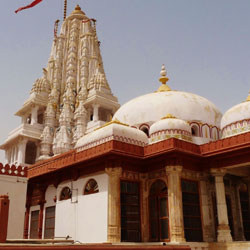
About Jain Temple Bhandasar, Bikaner History Jain Temple Bhandasar in Bikaner is a sacred place of worship for the Jain community. It was built by a wealthy merchant named Bhandasa Oswal in the 15th century. The construction of the temple took 45 years to complete, as it was meticulously designed and crafted with intricate marble carvings and vibrant frescoes. Architecture and Design The Jain Temple Bhandasar is renowned for its stunning architectural beauty. The temple is adorned with intricately carved marble columns, delicate filigree work, and colorful frescoes depicting Jain legends and stories. The temple's architecture is a perfect blend of Rajput and Mughal styles, making it a unique and visually stunning masterpiece. Best Time to Visit Winter months from October to March are the best time to visit Jain Temple Bhandasar in Bikaner, as the weather is pleasant and ideal for sightseeing. Cultural Significance The Jain Temple Bhandasar holds great cultural significance for the Jain community, as it is dedicated to the 5th Jain Tirthankara, Sumatinath. The temple is a symbol of Jain ideals such as non-violence, truth, and compassion. Pilgrimage Practices Pilgrims visiting the Jain Temple Bhandasar often perform rituals and prayers to seek blessings and spiritual enlightenment. Many followers also engage in meditation and reflection within the serene confines of the temple. Dress Code and Etiquette Visitors are required to dress modestly and cover their shoulders and legs while visiting the Jain Temple Bhandasar. It is customary to remove your shoes before entering the temple premises. Respectful behavior and silence are encouraged to maintain the sanctity of the temple. Activities and Experiences Visitors to Jain Temple Bhandasar can partake in various activities and experiences, such as exploring the exquisite architecture, admiring the intricate marble carvings, and soaking in the spiritual ambiance of the temple. Art and Religious Symbols The Jain Temple Bhandasar is adorned with beautiful artwork and religious symbols that symbolize Jain teachings and beliefs. Visitors can marvel at the detailed frescoes depicting Jain deities, Tirthankaras, and celestial beings. Local Insights Local guides at the Jain Temple Bhandasar can provide valuable insights into the history, architecture, and spiritual significance of the temple. Visitors can also learn about Jain customs, traditions, and rituals from the knowledgeable locals.
Explore MoreCultural Triangle Delights - Jaipur - Delhi - Agra Tour
6 Days/ 5 Night
New Delhi - Jaipur - Agra
Exploring Kumbhalgarh - Walking The Longest Fort Wall Tour
4 Days/ 3 Night
Kumbhalgarh - Udaipur
Rajasthan Rides - A Motorcycle Adventure Through The Land Of Kings Tour
7 Days/ 6 Night
Jaipur - Jodhpur - Pushkar - Udaipur
4 Nights - 5 Days Golden Triangle Tour Package
5 Days/ 4 Night
New Delhi - Jaipur - Agra
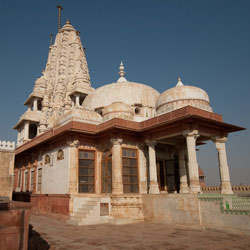
About The Shri Laxminath Temple The Shri Laxminath Temple is a revered Hindu temple located in the heart of Bikaner, Rajasthan. It is dedicated to Lord Vishnu and Goddess Laxmi, making it a significant place of worship for devotees. The temple's intricate architecture and historical importance make it a must-visit attraction for locals and tourists alike. Architecture Of Shri Laxminath Temple The Shri Laxminath Temple showcases stunning Rajasthani architecture with its intricately carved pillars, ornate ceilings, and beautiful marble statues. The temple is adorned with colorful frescoes and delicate mirror work, adding to its grandeur. The main sanctum sanctorum houses the idols of Lord Vishnu and Goddess Laxmi, exuding a divine aura that mesmerizes visitors. History The Shri Laxminath Temple has a rich history that dates back several centuries. It was built by Maharaja Rao Lunkaran in the early 19th century as a place of worship for the royal family and the people of Bikaner. The temple has withstood the test of time and remains an important religious site in the region, attracting devotees from far and wide. Best Time To Visit The Shri Laxminath Temple can be visited throughout the year, but the best time to experience its beauty is during the winter months from October to March. The weather is pleasant during this time, making it comfortable for visitors to explore the temple and its surroundings. The temple also hosts various festivals and religious ceremonies during this period, adding to the vibrant atmosphere. How To Reach The Shri Laxminath Temple is located in the heart of Bikaner city, making it easily accessible by road. Visitors can reach the temple by hiring a taxi or taking a local bus from the Bikaner bus stand. The nearest railway station is Bikaner Junction, which is well-connected to major cities in Rajasthan and other parts of India. The nearest airport is Civil Airport Bikaner, which is around 17 kilometers away from the temple. Significance Of The Shri Laxminath Temple The Shri Laxminath Temple holds immense religious significance for Hindus, as it is dedicated to Lord Vishnu, the preserver of the universe, and Goddess Laxmi, the goddess of wealth and prosperity. Devotees visit the temple to seek blessings for success, happiness, and well-being. The temple's serene atmosphere and spiritual vibes create a sense of peace and tranquility, making it a sacred space for introspection and meditation.
Explore More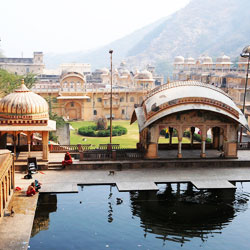
About The Galta-Temple in Jaipur The Galta Temple, also known as the Galta Ji Temple or the Monkey Temple, is a renowned Hindu pilgrimage site located in Jaipur, Rajasthan. Situated amidst the picturesque Aravalli hills, this temple complex comprises several temples, pavilions, and holy kunds (water tanks). The temple is dedicated to the Sun God and is visited by devotees and tourists alike for its spiritual significance and stunning architecture. Architecture of Galta-Temple The Galta Temple showcases a blend of Rajput and Mughal architectural styles, making it a unique and visually appealing attraction. The temple complex features intricately carved pillars, colorful frescoes, and ornate domes that add to its grandeur. The main temple is built using pink sandstone and marble, reflecting the traditional architectural elements of Rajasthan. The temple's courtyards, surrounded by lush greenery and natural springs, create a serene and tranquil ambiance for visitors. History The history of the Galta-Temple dates back to the 18th century when it was constructed by Diwan Rao Kriparam, a courtier of the royal family of Jaipur. The temple complex was further developed and expanded by the Kachwaha Rajput rulers, who held the site in high regard for its religious significance. Over the years, the Galta-Temple has become a revered pilgrimage site for Hindus, attracting devotees from far and wide. Best Time To Visit The best time to visit the Galta-Temple is during the winter months of October to March when the weather is pleasant and conducive for exploring the temple complex. The cooler temperatures make it easier to navigate the hilly terrain surrounding the temple and enjoy the natural beauty of the surroundings. Visitors can also witness colorful festivals and religious ceremonies that take place at the temple during this time, adding to the cultural experience. How To Reach The Galta-Temple is located approximately 10 kilometers from the city center of Jaipur and can be easily reached by car, taxi, or local transport. Visitors can hire a cab or take a public bus from Jaipur to reach the temple complex. The journey to the temple offers scenic views of the Aravalli hills, making it a memorable experience for travelers. Once at the temple, visitors can explore the various temples, kunds, and gardens at their own pace. Significance Of The Galta-Temple The Galta-Temple holds significant religious importance for Hindus, particularly followers of the Sun God. The temple complex is believed to be a sacred place where devotees can worship and seek blessings for prosperity and well-being. The natural springs and kunds within the temple complex are considered holy and are used for ritual bathing and purification ceremonies. The presence of monkeys in and around the temple is also considered auspicious and adds to the charm of the site.
Explore More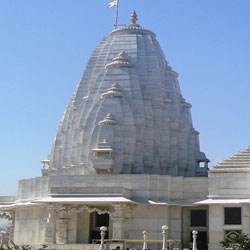
About The Birla Mandir Temple The Birla Mandir Temple, also known as the Laxmi Narayan Temple, is a stunning Hindu temple located in Jaipur, the capital city of Rajasthan, India. This beautiful temple is dedicated to Lord Vishnu (Narayan) and Goddess Lakshmi, who are worshipped by devotees seeking peace, prosperity, and happiness in their lives. Architecture Of Birla Mandir Temple The Birla Mandir Temple is known for its exquisite architectural design and intricate carvings. Built entirely of white marble, the temple exudes a sense of serenity and grandeur. The main shrine is adorned with beautiful sculptures depicting various scenes from Hindu mythology, while the walls are decorated with intricate patterns and motifs. The temple's three domes represent the three different approaches to religion – knowledge, action, and devotion. History The Birla Mandir Temple was built by the Birla family, a prominent industrialist family in India, in 1988. The temple was constructed to honor Lord Vishnu and Goddess Lakshmi and to promote the values of peace, harmony, and spirituality among the masses. Since its inauguration, the temple has been a popular place of worship for locals and tourists alike. Best Time To Visit The best time to visit the Birla Mandir Temple is during the early morning or evening hours when the temple is less crowded, and the weather is relatively pleasant. Visiting the temple during festivals such as Diwali and Janmashtami is also a great experience as the temple is beautifully decorated and the atmosphere is filled with devotion and prayers. How To Reach The Birla Mandir Temple is located in the heart of Jaipur city and is easily accessible by road. Visitors can hire a taxi or auto-rickshaw to reach the temple from any part of the city. The nearest railway station is Jaipur Junction, which is about 5 km away from the temple, while the nearest airport is Jaipur International Airport, which is about 12 km away. Significance Of The Birla Mandir Temple The Birla Mandir Temple holds great significance for devotees who seek blessings from Lord Vishnu and Goddess Lakshmi for wealth, happiness, and prosperity. The temple's serene ambiance and peaceful surroundings make it an ideal place for meditation and spiritual contemplation. The temple also hosts various cultural and religious events throughout the year, attracting a large number of visitors.
Explore More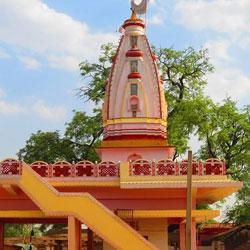
Shri 1008 Shri Bhomiya Ji Maharaj Mandir
About The Shri 1008 Shri Bhomiya Ji Maharaj Mandir Temple The Shri 1008 Shri Bhomiya Ji Maharaj Mandir Temple, located in Jaipur, Rajasthan, is a popular Hindu temple dedicated to Bhomiya Ji Maharaj. It is a sacred place of worship for devotees who come to seek blessings and offer their prayers to the deity. The temple is known for its spiritual ambiance and architectural beauty, making it a must-visit destination for tourists and pilgrims alike. Architecture Of Shri 1008 Shri Bhomiya Ji Maharaj Mandir Temple The architecture of the Shri 1008 Shri Bhomiya Ji Maharaj Mandir Temple is a fine example of traditional Rajasthani style. The temple features intricate carvings, vibrant colors, and stunning patterns that highlight the rich cultural heritage of the region. The sanctum sanctorum of the temple houses the idol of Bhomiya Ji Maharaj, adorned with flowers and incense, creating a serene atmosphere for devotees to offer their prayers. History The history of the Shri 1008 Shri Bhomiya Ji Maharaj Mandir Temple dates back several centuries. According to local legends, Bhomiya Ji Maharaj was a revered saint who lived in the region and performed miracles to help the people in need. Over time, a temple was built in his honor to commemorate his divine presence and to serve as a spiritual center for the community. Today, the temple stands as a symbol of faith and devotion, attracting devotees from far and wide. Best Time To Visit The best time to visit the Shri 1008 Shri Bhomiya Ji Maharaj Mandir Temple is during the winter months, from October to March, when the weather is pleasant and conducive for sightseeing. Devotees can participate in various religious ceremonies and festivals that take place at the temple during this time, adding to the spiritual experience. It is advisable to check the temple's schedule for any special events or rituals that may be happening during your visit. How To Reach The Shri 1008 Shri Bhomiya Ji Maharaj Mandir Temple is easily accessible by road, located in the outskirts of Jaipur city. Visitors can hire a taxi or take a local bus to reach the temple complex. The nearest airport is Jaipur International Airport, which is well-connected to major cities in India. For those traveling by train, Jaipur Railway Station is the closest railhead, with regular trains running to and from various parts of the country. Significance Of The Shri 1008 Shri Bhomiya Ji Maharaj Mandir Temple The Shri 1008 Shri Bhomiya Ji Maharaj Mandir Temple holds great significance for devotees who believe in the divine powers of Bhomiya Ji Maharaj. It is a place where prayers are answered, wishes are fulfilled, and blessings are sought for prosperity and well-being. The temple serves as a spiritual retreat for those seeking solace and guidance in times of need, making it a revered place of worship in the hearts of the faithful. Visitors to the temple can witness the devotion and faith of the devotees, experience the soothing chants and hymns, and immerse themselves in the divine aura of Bhomiya Ji Maharaj.
Explore More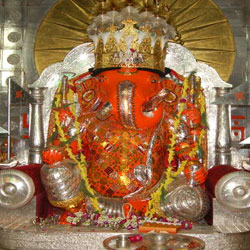
About The Moti Doongri Temple The Moti Doongri Temple, located in Jaipur, Rajasthan, is a popular Hindu shrine dedicated to Lord Ganesha. The temple is situated on a small hill called Moti Doongri, which translates to "Pearl Hill" in English. This temple is an important religious and cultural landmark in Jaipur and attracts devotees and tourists alike. The temple is known for its intricate architecture, serene ambiance, and religious significance. Architecture Of Moti Doongri Temple The architecture of the Moti Doongri Temple is a beautiful blend of Rajasthani and South Indian styles. The temple is adorned with intricate carvings, colorful paintings, and domes that add to its grandeur. The main sanctum of the temple houses the idol of Lord Ganesha, beautifully decorated with flowers and ornaments. The temple complex also includes smaller shrines dedicated to other Hindu deities, as well as a peaceful garden where visitors can sit and meditate. History The history of the Moti Doongri Temple dates back to the early 18th century when it was built by Seth Jai Ram Paliwal, a wealthy businessman from Jaipur. The temple was constructed as a tribute to Lord Ganesha, the remover of obstacles, and has since become a place of worship and pilgrimage for devotees from all over the country. Over the years, the temple has undergone renovations and additions, but its original charm and spiritual significance have been preserved. Best Time To Visit The best time to visit the Moti Doongri Temple is during the annual festival of Ganesh Chaturthi, which falls in the Hindu month of Bhadrapada (August-September). During this time, the temple is decorated with lights, flowers, and colorful decorations, and devotees gather to offer prayers and seek the blessings of Lord Ganesha. Apart from the festival, the temple is open to visitors throughout the year, and any time is a good time to experience the spirituality and tranquility of this sacred place. How To Reach The Moti Doongri Temple is located in the heart of Jaipur city and is easily accessible by road. The nearest bus stand is the Moti Doongri bus stand, from where visitors can take a short walk to reach the temple. Alternatively, taxis and auto-rickshaws are also available for hire to reach the temple. The nearest railway station is Jaipur Junction, which is well-connected to major cities in India. For those traveling by air, the Jaipur International Airport is the nearest airport to reach the temple. Significance Of The Moti Doongri Temple The Moti Doongri Temple holds great significance for the people of Jaipur and devotees of Lord Ganesha. It is believed that visiting the temple and offering prayers to Lord Ganesha can help in overcoming obstacles and achieving success in life. The temple is also a popular site for newlyweds to seek blessings for a happy and prosperous married life. The spiritual ambiance and positive energy of the temple make it a peaceful retreat for those seeking solace and divine intervention in their lives.
Explore More
About The Monkey Temple The Monkey Temple gets its name from the large population of monkeys that inhabit the temple complex. These playful and mischievous creatures can be seen running and jumping around the temple grounds, adding to the temple's charm. The temple complex consists of several shrines, pavilions, and holy water tanks, all nestled amidst the picturesque Aravalli Hills. Architecture of The Monkey Temple The architecture of the Monkey Temple is a beautiful blend of Hindu and Mughal styles, showcasing intricate carvings, domes, and arches. The temple complex is known for its stunning views of Jaipur city and the surrounding countryside. The main temple, dedicated to Lord Hanuman, features a series of steps that lead up to the entrance, where devotees can offer prayers and seek blessings. History The Monkey Temple has a rich history dating back to the 18th century. It is believed that the temple was built by Diwan Rao Kriparam, a courtier of the ruler of Jaipur, Maharaja Sawai Jai Singh II. The temple has since been renovated and expanded over the centuries, yet it has managed to retain its original charm and spiritual significance. Best Time To Visit The best time to visit the Monkey Temple is during the winter months, from October to March when the weather is pleasant and ideal for exploring the temple complex. It is recommended to visit the temple early in the morning or late in the evening to avoid the scorching midday sun. The annual Monkey Temple Fair, held during the Hindu festival of Makar Sankranti, is also a great time to experience the vibrant atmosphere and cultural festivities at the temple. How To Reach The Monkey Temple is located approximately 10 kilometers from Jaipur city center and can be easily reached by car or auto-rickshaw. Visitors can also opt for a guided tour or hire a taxi to explore the temple complex and learn about its history and significance. The nearest airport is Jaipur International Airport, which is well-connected to major cities in India. Significance Of The Monkey Temple The Monkey Temple holds great religious significance for Hindus, who believe that worshiping Lord Hanuman at this sacred site can bring blessings and protection. The temple is also a popular spot for photographers and nature lovers, who come to capture the stunning views and observe the antics of the resident monkeys. The tranquil atmosphere and spiritual energy of the temple make it a peaceful retreat from the hustle and bustle of city life.
Explore More
About The Tanot Rai Mata Mandir Temple The Tanot Rai Mata Mandir Temple is a popular Hindu temple located in the town of Tanot in the district of Jaisalmer, Rajasthan. This temple is dedicated to Goddess Tanot Rai, who is believed to be a form of Goddess Hinglaj Mata. The temple holds immense significance among the locals as well as tourists who visit the region. It is known for its spiritual aura and its historical importance. Architecture of Tanot Rai Mata Mandir Temple The architecture of Tanot Rai Mata Mandir Temple is a fine example of traditional Rajasthani temple architecture. The temple complex is surrounded by high walls and has a large courtyard where devotees can gather for prayers and ceremonies. The main shrine of the temple is adorned with intricate carvings and sculptures that depict various mythological stories and symbols. The temple also has a sanctum sanctorum where the idol of Goddess Tanot Rai is placed for worship. History The history of Tanot Rai Mata Mandir Temple dates back to the time of the Indo-Pakistani War of 1965. During the war, the temple miraculously survived several bombings that were carried out by the Pakistani forces. It is believed that the bombs dropped by the enemy forces failed to explode and the temple remained unscathed. This incident is considered as a miracle by the locals and is often cited as a testament to the divine protection of Goddess Tanot Rai. Since then, the temple has gained immense popularity and has become a symbol of faith and resilience. Best Time To Visit The best time to visit the Tanot Rai Mata Mandir Temple is during the winter months from October to March. The weather during this time is pleasant and suitable for exploring the temple complex. Devotees can also participate in various festivals and ceremonies that are organized at the temple during this period. It is advisable to avoid visiting the temple during the summer months as the temperature can rise significantly and make it uncomfortable for visitors. How To Reach The Tanot Rai Mata Mandir Temple is located in the town of Tanot, which is well-connected by road to the city of Jaisalmer. Visitors can hire a taxi or take a bus from Jaisalmer to reach the temple. The nearest railway station is located in Jaisalmer, which is approximately 120 kilometers away from Tanot. The nearest airport is in Jodhpur, which is around 325 kilometers from the temple. From the airport or railway station, visitors can hire a taxi or take a bus to reach the Tanot Rai Mata Mandir Temple. Significance of The Tanot Rai Mata Mandir Temple The Tanot Rai Mata Mandir Temple holds immense significance for the locals as well as for the Indian Army. It is believed that the temple offers divine protection to the soldiers who guard the borders of India. The temple is also considered as a symbol of faith and devotion among the devotees who visit it seeking blessings from Goddess Tanot Rai. The temple is a popular pilgrimage site and attracts thousands of devotees every year who come to offer prayers and seek the blessings of the goddess.
Explore More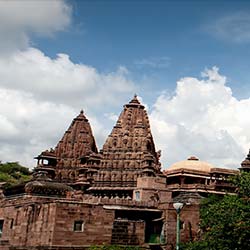
About The Mahamandir Temple The Mahamandir Temple is a magnificent Hindu temple located in Jodhpur, Rajasthan. This temple is dedicated to Lord Shiva and is renowned for its stunning architecture and intricate carvings. The temple is a popular pilgrimage site for devotees and tourists alike, attracting visitors from all over the world. Architecture Of Mahamandir Temple The Mahamandir Temple is an architectural marvel with its high shikharas, or spires, that reach towards the sky. The temple is built in the traditional Rajasthani style, with intricate carvings and designs adorning its walls and pillars. The temple is made entirely of red sandstone, giving it a striking and vibrant appearance. The interior of the temple is equally impressive, with beautifully crafted statues of deities and intricate designs on the ceilings and walls. History The Mahamandir Temple was built in the 18th century by Maharaja Umaid Singh of Jodhpur. The temple took several years to complete, but its stunning architecture and design have made it one of the most iconic temples in Rajasthan. The temple has stood the test of time and remains an important religious site for followers of Hinduism. Best Time To Visit The best time to visit the Mahamandir Temple is during the winter months from October to March. The weather during this time is pleasant and ideal for exploring the temple and its surroundings. Additionally, many festivals and religious events take place at the temple during this time, making it a lively and vibrant place to visit. How To Reach The Mahamandir Temple is located in Jodhpur, Rajasthan, making it easily accessible by road, rail, and air. The nearest airport is the Jodhpur Airport, which is well-connected to major cities in India. The temple is also easily accessible by road, with regular bus services running to and from Jodhpur. Additionally, the Jodhpur Railway Station is a major railway hub, with trains connecting the city to various parts of the country. Significance Of The Mahamandir Temple The Mahamandir Temple holds great significance for followers of Hinduism, as it is dedicated to Lord Shiva, one of the principal deities in Hindu mythology. Devotees visit the temple to seek blessings and offer prayers to Lord Shiva. The temple is also known for its spiritual and peaceful ambiance, making it a popular destination for meditation and reflection.
Explore More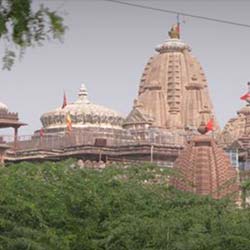
About The Sachiya Mata Temple in Jodhpur The Sachiya Mata Temple, located in Osian village near Jodhpur, Rajasthan, is a renowned pilgrimage site dedicated to Goddess Sachiya. This ancient temple holds tremendous religious and historical significance, attracting devotees and tourists alike. The temple's captivating architecture, rich history, and peaceful ambiance make it a must-visit destination for those seeking spiritual solace and cultural enlightenment. Architecture Of Sachiya Mata Temple The Sachiya Mata Temple showcases exquisite Rajasthani architectural styles with intricate carvings, ornate pillars, and beautifully adorned ceilings. The temple's main sanctum is adorned with colorful frescoes depicting various mythological tales, adding to its grandeur and charm. The structure is built using sandstone and marble, enhancing its visual appeal and architectural precision. The temple complex also includes smaller shrines dedicated to other deities, making it a comprehensive religious site for devotees. History The history of the Sachiya Mata Temple dates back to ancient times, with legends and folklore surrounding its establishment. It is believed that the temple was constructed by Parmar King Upendre in the 8th century in honor of Goddess Sachiya, the wife of Lord Indra. Over the centuries, the temple underwent renovations and additions, reflecting various architectural influences and historical events. The temple's legacy is deeply rooted in the cultural fabric of Rajasthan, making it a symbol of devotion and faith for generations of devotees. Best Time To Visit The best time to visit the Sachiya Mata Temple is during the festive season of Navratri, which falls in September and October. During this time, the temple is adorned with colorful decorations, and special prayers and rituals are conducted to honor the goddess. The vibrant atmosphere, cultural performances, and religious fervor make Navratri a truly enchanting time to experience the temple's spiritual energy. However, visitors can also explore the temple throughout the year and witness its serene beauty and architectural splendor. How To Reach The Sachiya Mata Temple is located in Osian village, approximately 65 kilometers from Jodhpur city in Rajasthan. Visitors can easily reach the temple by road via private vehicles or public transport options such as buses or taxis. The nearest airport to the temple is in Jodhpur, making it convenient for domestic and international tourists to access the site. Additionally, local tour operators and guides offer guided tours to the temple, providing a hassle-free travel experience for visitors. Significance Of The Sachiya Mata Temple The Sachiya Mata Temple holds immense significance for devotees who worship Goddess Sachiya as the divine mother and protector. The temple is a sacred place where devotees seek blessings for prosperity, health, and well-being. The goddess is believed to fulfill the wishes of her devotees and shower them with divine grace and blessings. The temple's serene ambiance and spiritual vibrations create a peaceful retreat for those seeking solace and inner harmony. Overall, the Sachiya Mata Temple is a revered pilgrimage site that embodies the rich cultural and religious heritage of Rajasthan.
Explore More
About The Mahamandaleshwar Mahadev Temple in Jodhpur The Mahamandaleshwar Mahadev Temple is a prominent Hindu temple located in the city of Jodhpur in the state of Rajasthan, India. Dedicated to Lord Shiva, this temple holds great religious significance for the locals as well as tourists who visit the city. The temple is known for its unique architecture, historical importance, and spiritual ambiance. Architecture Of Mahamandaleshwar Mahadev Temple The Mahamandaleshwar Mahadev Temple showcases a combination of intricate Rajput and Mughal architectural styles. The temple's main entrance is grand and ornate, with intricate carvings and detailed designs. The inner sanctum of the temple houses a large idol of Lord Shiva, adorned with jewels and flowers. The temple complex also features several smaller shrines dedicated to other Hindu deities, as well as a spacious courtyard for devotees to gather and pray. The temple's exterior is adorned with beautiful marble sculptures and intricate stone carvings, depicting various mythological scenes and religious motifs. The overall design of the temple is a testament to the skilled craftsmanship of the artisans who built it, showcasing a blend of traditional and contemporary architectural elements. History The Mahamandaleshwar Mahadev Temple has a rich history that dates back several centuries. According to local legends, the temple was constructed by a Rajput king as a token of gratitude to Lord Shiva for granting him victory in a battle. Over the years, the temple has undergone several renovations and expansions, each adding to its grandeur and magnificence. The temple has played a significant role in the religious and cultural life of the city, serving as a place of worship, meditation, and spiritual solace for devotees from all walks of life. The temple's historical significance and architectural beauty continue to attract visitors from far and wide, making it a must-visit destination in Jodhpur. Best Time To Visit The best time to visit the Mahamandaleshwar Mahadev Temple in Jodhpur is during the winter months, from October to March. The weather during this time is pleasant and ideal for exploring the temple complex and enjoying the spiritual ambiance. The temple sees a higher influx of visitors during festivals like Maha Shivaratri when devotees throng to seek the blessings of Lord Shiva. How To Reach The Mahamandaleshwar Mahadev Temple is easily accessible from the Jodhpur city center. Visitors can reach the temple by hiring a taxi, auto-rickshaw, or taking a local bus. The temple is located at a short distance from the main attractions in Jodhpur, making it a convenient stop for tourists exploring the city. The nearest airport is the Jodhpur Airport, while the Jodhpur Railway Station is the closest railhead to the temple. Significance Of The Mahamandaleshwar Mahadev Temple The Mahamandaleshwar Mahadev Temple holds immense religious significance for Hindus, as it is dedicated to Lord Shiva, one of the principal deities in the Hindu pantheon. Devotees visit the temple to seek the blessings of Lord Shiva for prosperity, peace, and fulfillment of their wishes. The temple's serene atmosphere and sacred surroundings make it an ideal place for meditation and spiritual contemplation.
Explore More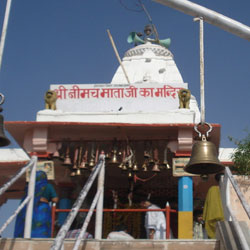
About The Neemach Mata Temple in Udaipur The Neemach Mata Temple is a popular Hindu temple located on a hillock in the city of Udaipur, Rajasthan. Dedicated to Goddess Neemach Mata, the temple is a significant religious site for the locals as well as tourists visiting Udaipur. The temple offers breathtaking views of the city and the surrounding hills, making it a must-visit destination for spiritual seekers and nature lovers alike. Architecture Of Neemach Mata Temple The Neemach Mata Temple boasts beautiful architecture that reflects the traditional Rajasthani style. The temple is adorned with intricate carvings, vibrant colors, and ornate designs that are a treat for the eyes. The temple complex also includes a spacious courtyard, a sacred shrine, and a majestic entrance gate that adds to its grandeur. History The history of the Neemach Mata Temple dates back to ancient times when the temple was built to honor Goddess Neemach Mata, who is believed to be the protector of the city of Udaipur. Legends say that the temple was constructed by Maharana Raj Singh in the 16th century to seek the blessings of the goddess for the well-being of his kingdom. Since then, the temple has been a place of worship and pilgrimage for devotees from far and wide. Best Time To Visit The best time to visit the Neemach Mata Temple is during the early morning or evening hours when the weather is pleasant and the temple is less crowded. The temple offers a serene and peaceful atmosphere during these times, allowing visitors to admire the beauty of the temple and enjoy the panoramic views of Udaipur city. How To Reach The Neemach Mata Temple is situated on a hill in Udaipur, making it accessible by road. Visitors can reach the temple by taking a taxi or hiring a local auto-rickshaw from any part of the city. The temple is located around 8 kilometers from the city center and offers a scenic drive through the picturesque surroundings of Udaipur. Significance Of The Neemach Mata Temple The Neemach Mata Temple holds great significance for the people of Udaipur as it is believed to be a place where wishes are fulfilled and prayers are answered by the goddess. Devotees visit the temple to seek blessings for prosperity, success, and protection from evil forces. The temple is also known for its spiritual aura and positive vibes that attract visitors seeking peace and harmony in their lives.
Explore More
About The Neelkanth Temple The Neelkanth Temple is a stunning piece of architecture located in the city of Alwar in the Indian state of Rajasthan. This temple is dedicated to Lord Shiva and is one of the most popular religious sites in the region. The temple is known for its beautiful architecture, intricate carvings, and serene ambiance that attracts pilgrims and tourists alike. Architecture Of Neelkanth Temple The Neelkanth Temple is a perfect example of Rajasthani architecture. The temple is built using white marble and features intricate carvings and sculptures that depict various mythological stories and characters. The main sanctum of the temple houses a Shiva Lingam, which is worshipped by devotees. The temple also has a beautiful courtyard and a stunning entrance gate that adds to its charm. History The Neelkanth Temple is believed to have been constructed in the 18th century by the Maharaja of Alwar. The temple has gone through several renovations and restorations over the years, but its original beauty and grandeur have been preserved. The temple holds great religious and historical significance for the people of Alwar and is considered a sacred place of worship. Best Time To Visit The best time to visit the Neelkanth Temple is during the months of October to March when the weather is pleasant and suitable for sightseeing. The temple also hosts various festivals and events during this time, which attract a large number of devotees and tourists. It is advisable to avoid visiting the temple during the summer months as the weather can be extremely hot and uncomfortable. How To Reach The Neelkanth Temple is located in the city of Alwar, which is well-connected by road, rail, and air. The nearest airport to Alwar is in Jaipur, which is around 160 kilometers away. The city also has a railway station that is well-connected to major cities like Delhi, Jaipur, and Agra. Visitors can also reach Alwar by road as the city is well-connected by a network of highways. Significance Of The Neelkanth Temple The Neelkanth Temple holds great religious significance for the people of Alwar and is considered a sacred place of worship. The temple is dedicated to Lord Shiva, who is believed to be the destroyer of evil and the giver of peace and prosperity. Devotees visit the temple to seek blessings and offer prayers to the deity. The serene ambiance and spiritual energy of the temple make it a popular destination for pilgrims and tourists alike.
Explore More2 Night - 3 Days Jaipur Tour Package
3 Days/ 2 Night
Jaipur
3N 4D Jaipur - Ajmer - Pushkar Tour Package
4 Days/ 3 Night
Ajmer - Jaipur - Pushkar
Rajasthan Royal Heritage Tour 6D - 5N
6 Days/ 5 Night
Jaipur - Jodhpur - Udaipur
8N - 9D Rajasthan Tour Package
9 Days/ 8 Night
Ajmer - Jaipur - Jaisalmer - Jodhpur - Mount Abu - Udaipur
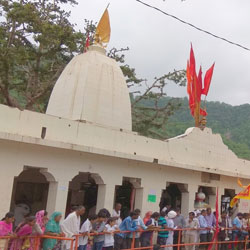
About The Narayani Mata Temple The Narayani Mata Temple is believed to have been built in the 18th century by the Maharaja Balwant Singh of Alwar. The temple is dedicated to Goddess Narayani, a form of Goddess Durga. The temple is built in a traditional Rajasthani style and is adorned with intricate carvings, beautiful sculptures, and colorful paintings. The temple complex also includes a sacred pond, where devotees can take a dip before entering the temple. The serene surroundings and the peaceful atmosphere make it a perfect place for meditation and spiritual reflection. Architecture Of Narayani Mata Temple The architecture of the Narayani Mata Temple is a blend of Rajput and Mughal styles. The main temple is built using white marble, with intricate carvings and sculptures adorning the walls and pillars. The temple's dome is decorated with colorful glasswork, adding to its beauty. The temple complex also includes a Mandap (assembly hall) where religious ceremonies and rituals are conducted. The Mandap is supported by beautifully carved pillars, with a ceiling adorned with intricate designs. The temple's architecture is a perfect example of the rich cultural heritage of Rajasthan. History The history of the Narayani Mata Temple dates back to the 18th century when Maharaja Balwant Singh of Alwar built the temple to honor Goddess Narayani. The temple has since been a place of worship and pilgrimage for devotees from all over the country. Over the years, the temple has undergone several renovations and expansions, but its original charm and beauty have been preserved. The temple is also associated with several legends and folklore, adding to its historical significance. The temple's history is a testament to the rich religious and cultural heritage of Rajasthan. Best Time To Visit The best time to visit the Narayani Mata Temple is during the festival of Navratri, which is celebrated with great fervor and devotion. During Navratri, the temple is decorated with lights, flowers, and colorful decorations. Devotees from far and wide visit the temple to seek the blessings of Goddess Narayani. Apart from Navratri, the temple is also a popular destination during the winter months when the weather is mild and pleasant. The temple's serene surroundings and peaceful atmosphere make it an ideal place for spiritual rejuvenation. How To Reach The Narayani Mata Temple is located in Alwar, Rajasthan, and is easily accessible by road. The nearest airport is in Jaipur, which is approximately 150 kilometers away from Alwar. From Jaipur, one can hire a taxi or take a bus to reach the temple. The nearest railway station is in Alwar, which is well-connected to major cities in Rajasthan and other parts of the country. From the railway station, one can hire a taxi or take a local bus to reach the temple. Significance Of The Narayani Mata Temple The Narayani Mata Temple holds immense religious significance for devotees of Goddess Narayani. The temple is believed to fulfill the wishes of the devotees who visit with a pure heart and devotion. The temple is also known for its healing powers and is said to bring peace and prosperity to those who seek the blessings of the Goddess. The temple is also a popular tourist destination, attracting visitors with its architectural beauty and historical importance. The serene surroundings, peaceful atmosphere, and religious significance make the Narayani Mata Temple a must-visit destination for those seeking spiritual solace and divine blessings.
Explore More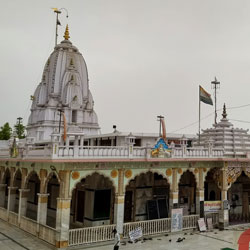
About Tijara Jain Temple History The Tijara Jain Temple, located in Alwar, is a significant pilgrimage site for the Jain community. The temple dates back to the 8th century and is dedicated to Lord Mahavira, the 24th Tirthankara of Jainism. It serves as a place of worship, reflection, and spiritual growth for followers of the Jain faith. Architecture and Design The Tijara Jain Temple is renowned for its stunning architecture and intricate design. The temple features exquisite carvings, ornate pillars, and beautiful sculptures that showcase the craftsmanship and artistry of ancient Jain architects. The temple's walls are adorned with colorful frescoes depicting scenes from Jain mythology, creating a serene and sacred atmosphere for visitors. Best Time to Visit The best time to visit the Tijara Jain Temple is during the winter months, from October to March, when the weather is pleasant and suitable for exploring the temple complex. Avoid visiting during the summer months, as temperatures can soar in Alwar, making it uncomfortable to roam around the temple. Cultural Significance The Tijara Jain Temple holds immense cultural significance for the Jain community, as it serves as a place of worship, meditation, and spiritual enlightenment. The temple is a symbol of Jain heritage and tradition, and its preservation is crucial for maintaining the rich cultural legacy of Jainism. Pilgrimage Practices Visitors are required to remove their shoes before entering the temple premises as a sign of respect. Pilgrims often perform rituals such as offering prayers, lighting incense sticks, and making offerings of flowers and fruits to Lord Mahavira. The temple complex also includes meditation halls and prayer rooms where devotees can engage in spiritual practices and seek inner peace. Dress Code and Etiquette Visitors are expected to dress modestly and appropriately when visiting the temple, covering their shoulders and knees out of respect for the sacredness of the site. Refrain from taking photographs inside the temple premises, as it is considered disrespectful to the sanctity of the place. Observe silence and maintain a calm and respectful demeanor while inside the temple to avoid disturbing others who are engaged in prayer and meditation. Activities and Experiences Visitors to the Tijara Jain Temple can participate in a variety of activities and experiences that enhance their spiritual journey and cultural understanding. Some of the activities include attending religious ceremonies, exploring the temple complex, interacting with Jain monks, and learning about Jain teachings and philosophy. Art and Religious Symbols The Tijara Jain Temple is adorned with intricate artwork, including intricate carvings, colorful frescoes, and symbolic sculptures that depict Jain deities, teachings, and stories. The temple's architecture is a blend of artistic creativity and spiritual symbolism, creating a visually stunning and spiritually uplifting environment for visitors. Local Insights Visiting the Tijara Jain Temple offers a unique opportunity to gain insights into Jain culture, traditions, and beliefs. Interacting with local devotees, attending religious ceremonies, and exploring the temple's architecture provide a deeper understanding of Jainism and its significance in the local community. Engaging with the local community allows visitors to appreciate the cultural richness and spiritual depth of Jain heritage in Alwar.
Explore More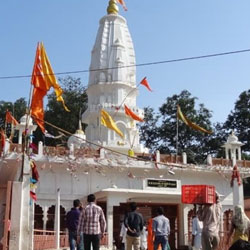
There are plenty of tourist spots in Alwar, Rajasthan that beguile the wayfarers from all over the globe. The wide variety of attractions in this royal land makes it one of the preferred tourist destinations in India. It is frequently visited by global tourists. The plentiful attractions serve the taste of all visitors. Special features of this place are • Historical sites, • Bubbly wildlife, • Scenic landscape, • Rustic essence, • Rainbow-colored culture, • Values tradition, • Sea of the golden desert, etc. All of them present Alwar as one suitable tourist corner in the country. One of the most visited tourist spots in Alwar is the Bhartrihari temple. About Bhartrihari Temple Alwar Bhartihari temple is Located around 30km away from the city and close to the well-known Sariska National Park. This temple is one of the most prevalent sanctified spots in Alwar and is named after Bhartrihari Baba (ruler of Ujjain). Hence, it holds great historical importance. The temple is constructed in customary Rajasthani style with wide corridors, floral designed pillars of shikharas and mandaps. Things to do around Bhartrihari temple • Jungle safari at Sariska tiger reserve • Shopping for kagzi pottery • Tasting delectable food in kalakand market • Trekking in Alwar • Shopping in Alwar History of Bhartrihari temple According to the folklore, Bhartrihari Baba left his empire and became a saint. After so many years, he returned to his wife and requested her for Bhiksha (or something to eat). The queen gave him a fruit that he had it and turned immortal. Devotees have faith in that Baba was sanctified with some saintly powers. Another story says, Raja Bharthari while returning from hunting saw a woman surrendering her life by jumping into her husband’s fire. Maharaja Bharthari got captivated and wanted to test his wife’s devotion as well. So, next time he went to the jungle for hunting, a messenger carried back news of his death to Rani Pingala. She expired on hearing the news itself. When King Bharthari came to know this, he got devastated. In his grief, he gave up the worldly amenities and became a monk. The king then became a follower of Guru Gorakhnath and meditated here in Rajasthan. He prayed to God for water and his sincerity and dedication were answered by God and stream appeared from rock underneath. Baba Bharthari as he was known later had buried himself live in the place where the temple stands today. The architecture of Bhartrihari Temple in Alwar It is a beautiful temple which is done up in the traditional Rajasthani style of architecture--wide galleries with surrounding porches, floral designed columns of shikharas, mandaps, etc. Best time to visit Bhartrihari temple October to March is, in general, the best time to visit Rajasthan. This tourist spot is good to visit in July that is the rainy season as well. How to reach Alwar? One of the major reasons for Alwar to grow into a top tourist destination is its conveyance system. The enhanced transportation of the city has removed the questions like how to reach Alwar. The place is very well connected to roads and highways. You can take your vehicle to reach the temple. Nearby attractions in Alwar 1. Bala Quila fort 2. Bhangarh Fort 3. Siliserh lake palace 4. Moti dungaree 5. City palace 6. Moosi Rani ki chhatri 7. Vinay Vilas Palace 8. Churi market 9. Sarafa Bazar 10. Kesroli Tips for visiting Bhartrihari temple This place is a happening one and there are so many attractive tourist spots to visit. So if you are visiting this place as a couple, in a group or with family, some tips are here to give. • Plan a proper tour • Check for best travel operators • Explore various deals including fun activities • Sightseeing and touring must be included • Ask for a travel guide A travel guide to this place is a must if you want to know everything clearly and save your time to enjoy other fun activities.
Explore More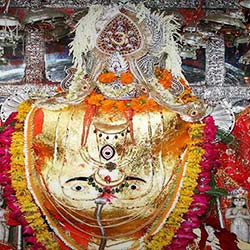
About The Ganesh Trinetra Temple The Ganesh Trinetra Temple is a popular Hindu temple located in Ranthambore, Rajasthan. Dedicated to Lord Ganesha, the temple holds significant religious importance for devotees and visitors alike. The temple is known for its unique trinetra or three-eyed idol of Lord Ganesha, which is believed to be very powerful and grants the wishes of those who worship him with devotion. Architecture Of Ganesh Trinetra Temple The Ganesh Trinetra Temple is a beautiful example of traditional Rajasthani architecture. The temple is adorned with intricate carvings, colorful paintings, and sculptures that depict various stories and legends from Hindu mythology. The main sanctum of the temple houses the trinetra idol of Lord Ganesha, which is worshipped by devotees with great reverence. The temple complex also includes a prayer hall, a holy water tank, and beautifully landscaped gardens that add to the serene ambiance of the place. History The history of the Ganesh Trinetra Temple dates back several centuries. It is believed that the temple was built by a local ruler to seek the blessings of Lord Ganesha for protection and prosperity. Over the years, the temple has undergone several renovations and expansions, but its spiritual essence and significance have remained intact. The temple attracts thousands of pilgrims and tourists every year who come to seek the blessings of the powerful trinetra idol of Lord Ganesha. Best Time To Visit The best time to visit the Ganesh Trinetra Temple is during the festival of Ganesh Chaturthi, which is celebrated with great pomp and show in the temple premises. The festival usually falls in the months of August or September and attracts a large number of devotees from all over the country. The temple is also a popular destination for visitors throughout the year due to its peaceful surroundings and spiritual ambiance. How To Reach The Ganesh Trinetra Temple is located in Ranthambore, which is well-connected by road, rail, and air. The nearest airport is in Jaipur, which is approximately 180 kilometers away from the temple. From Jaipur, one can hire a taxi or take a bus to reach Ranthambore. The nearest railway station is in Sawai Madhopur, which is around 12 kilometers away from the temple. From the railway station, visitors can hire a cab or take a local bus to reach the temple. The temple is also easily accessible by road, and there are regular bus services from nearby cities to Ranthambore. Significance Of The Ganesh Trinetra Temple The Ganesh Trinetra Temple holds immense significance for devotees as it is believed to fulfill the wishes of those who pray to the trinetra idol of Lord Ganesha with devotion and faith. The three eyes of Lord Ganesha symbolize wisdom, knowledge, and protection, and devotees believe that worshipping the trinetra idol can remove obstacles and bring success and happiness in their lives. The temple is also considered a place of spiritual healing and rejuvenation, where visitors can find inner peace and solace in the divine presence of Lord Ganesha. Overall, the Ganesh Trinetra Temple is a must-visit destination for those seeking spiritual upliftment and blessings from the benevolent deity.
Explore More
About Gurudwara Singh Sabha Gurudwara Singh Sabha is a prominent Sikh temple located in Pushkar, Rajasthan. It serves as a place of worship for the Sikh community in the region and also welcomes visitors of all faiths to experience its spiritual and cultural significance. Architectural Facts The Gurudwara Singh Sabha features traditional Sikh architecture, with its white marble facade, domes, and intricate wooden carvings. The main hall, or Darbar Sahib, is adorned with beautiful frescoes and a central platform for the Guru Granth Sahib, the holy scripture of Sikhism. History The history of Gurudwara Singh Sabha dates back to the early 20th century when it was established by the Sikh community in Pushkar. It has since been a place of spiritual solace and community gatherings for locals and tourists alike. Location Gurudwara Singh Sabha is located in the heart of Pushkar, near the famous Pushkar Lake. Its central location makes it easily accessible for visitors exploring the town and its religious sites. Visiting Hours The Gurudwara is open to visitors from early morning until late evening, with specific prayer and service times throughout the day. Visitors are encouraged to check the schedule in advance for any special events or ceremonies. Gurudwara Services and Events The Gurudwara Singh Sabha hosts regular prayer services, Kirtan (devotional singing), and langar (community kitchen) for all visitors. Special events and festivals, such as Gurpurabs (Sikh historical anniversaries) and Vaisakhi, are celebrated with great fervor. Weekend availability may vary depending on the schedule of events, so it is recommended to inquire in advance for visiting hours on Saturdays and Sundays. Weddings Gurudwara Singh Sabha is open for Sikh weddings and other ceremonies, providing a sacred and serene space for couples to exchange vows in accordance with Sikh traditions. Accessibility and Directions Visitors can easily reach Gurudwara Singh Sabha by car or public transport, with ample parking available nearby for those driving. The temple is wheelchair accessible, ensuring that all visitors can participate in its services and events. Visitor’s Information There is no entry fee to visit Gurudwara Singh Sabha, but visitors are expected to dress modestly and cover their heads with a scarf or head covering as a sign of respect. Etiquette such as removing shoes before entering the main hall and refraining from smoking or drinking alcohol on the premises is also important. Guides are available to provide information about the Gurudwara’s history and significance, as well as assistance for those unfamiliar with Sikh customs and practices. Nearby Attractions Visitors to Gurudwara Singh Sabha can explore the vibrant bazaars, historical sites, and temples in Pushkar, including the Brahma Temple and Savitri Temple. The tranquil Pushkar Lake is also a short walk away, offering a peaceful retreat for contemplation and relaxation. Best Time to Visit The best time to visit Gurudwara Singh Sabha is during the early morning or evening prayer services, when the atmosphere is filled with devotional music and the aroma of langar. The winter months from October to March offer pleasant weather for sightseeing and exploring Pushkar’s cultural heritage.
Explore More
About The Rangji Temple The Rangji Temple is a popular Hindu temple located in Pushkar, Rajasthan. It is dedicated to Lord Rangji, an incarnation of Lord Vishnu. The temple is a significant religious site for devotees and tourists alike, known for its unique architecture and rich history. Architecture Of Rangji Temple The Rangji Temple is a beautiful blend of South Indian and Rajput architectural styles. The temple's main entrance is adorned with a towering gopuram (gateway tower) typical of South Indian temples, while the inner sanctum and courtyard feature intricate Rajput artwork and carvings. The temple's central shrine houses a majestic idol of Lord Rangji, intricately carved and adorned with jewels. History The Rangji Temple was built in the 18th century by Seth Puran Mal Ganeriwal, a wealthy merchant from Mathura. He was a devotee of Lord Rangji and commissioned the construction of the temple to honor his deity. The temple has since been a place of worship and pilgrimage for followers of Lord Vishnu. Best Time To Visit The best time to visit the Rangji Temple is during the annual Rangji Ka Mela festival, which is held in March or April. During this time, the temple is decorated with colorful lights and flowers, and devotees from all over the country gather to pay their respects to Lord Rangji. The festival is a vibrant celebration of music, dance, and devotion. How To Reach The Rangji Temple is located in the heart of Pushkar, making it easily accessible by road. The nearest railway station is the Ajmer Junction, which is well-connected to major cities like Jaipur and Delhi. From Ajmer, visitors can hire a taxi or take a local bus to reach Pushkar. The temple is a short walk from the main market area of Pushkar. Significance Of The Rangji Temple The Rangji Temple holds great significance for devotees of Lord Vishnu, as it is believed to be one of the oldest temples dedicated to Lord Rangji in India. The temple is also a symbol of the cultural and architectural heritage of Rajasthan, with its unique blend of styles and intricate carvings. Pilgrims visit the temple to seek blessings for prosperity, success, and spiritual fulfillment.
Explore More